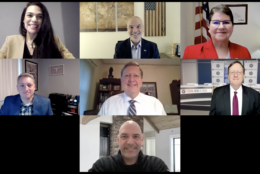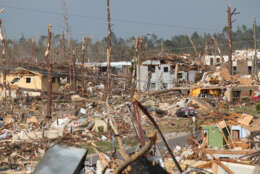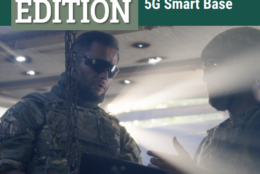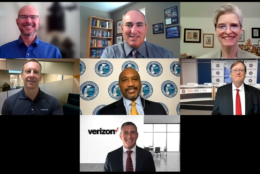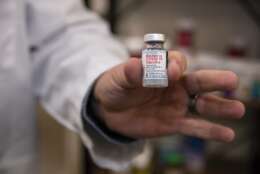Verizon
-
During this webinar, you will learn how federal IT practitioners from the U.S. Patent & Trademark Office, Internal Revenue Service and Department of Homeland Security are implementing strategies and initiatives around IT modernization.
February 28, 2022 -
Every storm is different. Brian Hastings, director of the Alabama Emergency Management Agency, suggested that responding to a disaster requires a certain amount of precision and that only comes from practice, familiarity with the team and solid communications.
February 25, 2022 -
Powerful storms can leave customers in the dark with no communications capabilities . That’s considered a serious homeland security risk. To mitigate it, the Cybersecurity and Infrastructure Security Agency (CISA) provides end-to-end communications priority using three special services, including a Verizon SPOT.
February 18, 2022 -
The Department of Agriculture outlines their strategy to significantly increase fuels and forest health treatments to address the escalating crisis of wildfire danger that threatens millions of acres and numerous communities across the United States.
February 09, 2022 -
According to MaryAnn Tierney, regional administrator for FEMA Region 3, Federal Emergency Management Agency relies on three key steps to respond to the increasing frequency and evolving potency of natural disasters.
February 03, 2022 -
As 5G begins to roll out in civilian and military spaces, the Defense Department is testing 5G networks at a handful of bases to ensure connectivity and security. Since last year, the Pentagon has had…
February 01, 2022 -
This exclusive e-book demonstrates not only the progress that the Pentagon is making in finding real value out of 5G, but begins to paint the future picture across DoD.
January 31, 2022 -
The Federal Aviation Administration worries strong signals near airports will interfere with certain aircraft systems essential to safe landings.
January 05, 2022 -
During this webinar, you will learn how federal IT practitioners from the Defense Logistics Agency, NASA Goddard Space Flight Center and the Transportation Security Administration are implementing strategies and initiatives around IT modernization.
August 23, 2021 -
The Department of Defense is aimed at creating the smart base of the future. Bases are essentially miniature cities, with all the same infrastructure needs like transportation, on-base personnel services and energy management, coupled with specific military needs. The idea is to use a 5G infrastructure to connect all of these elements, as well as cybersecurity and physical security, to become fully integrated and agile.
August 02, 2021 -
The Air Force and the Defense Department writ large are expecting 5G to be a game changer in the way it delivers information and connects platforms.
July 28, 2021 -
As 5G is starting to roll out, telehealth may be breaking into a completely new plane. At Joint Base San Antonio (JBSA) the Air Force is testing capabilities that could be the future of medicine.
July 22, 2021 -
During this webinar, you will learn how top government emergency communications executives from the Cybersecurity and Infrastructure Security Agency, Federal Emergency Management Agency and the Transportation Department are addressing the challenges and opportunities around emergency communications and public safety.
July 19, 2021 -
This program provides a progress report on IT modernization in government.
March 01, 2021 -
In today's Federal Newscast, at least 132,000 health care professionals at the Department of Veterans Affairs have received the first dose of the COVID-19 vaccine.
January 06, 2021

